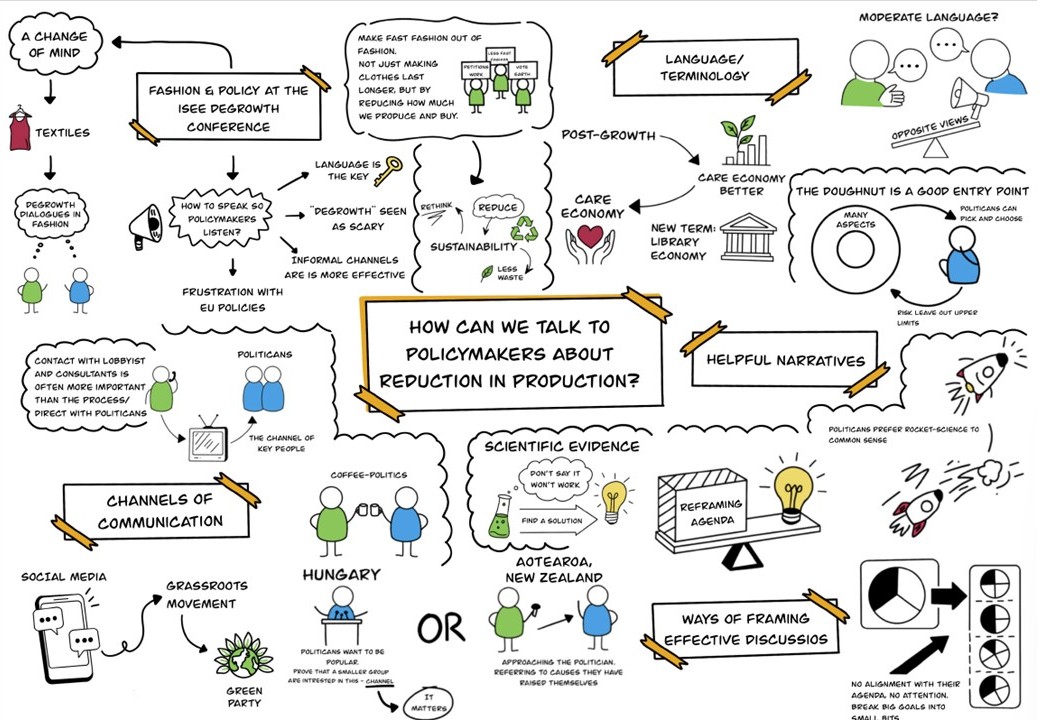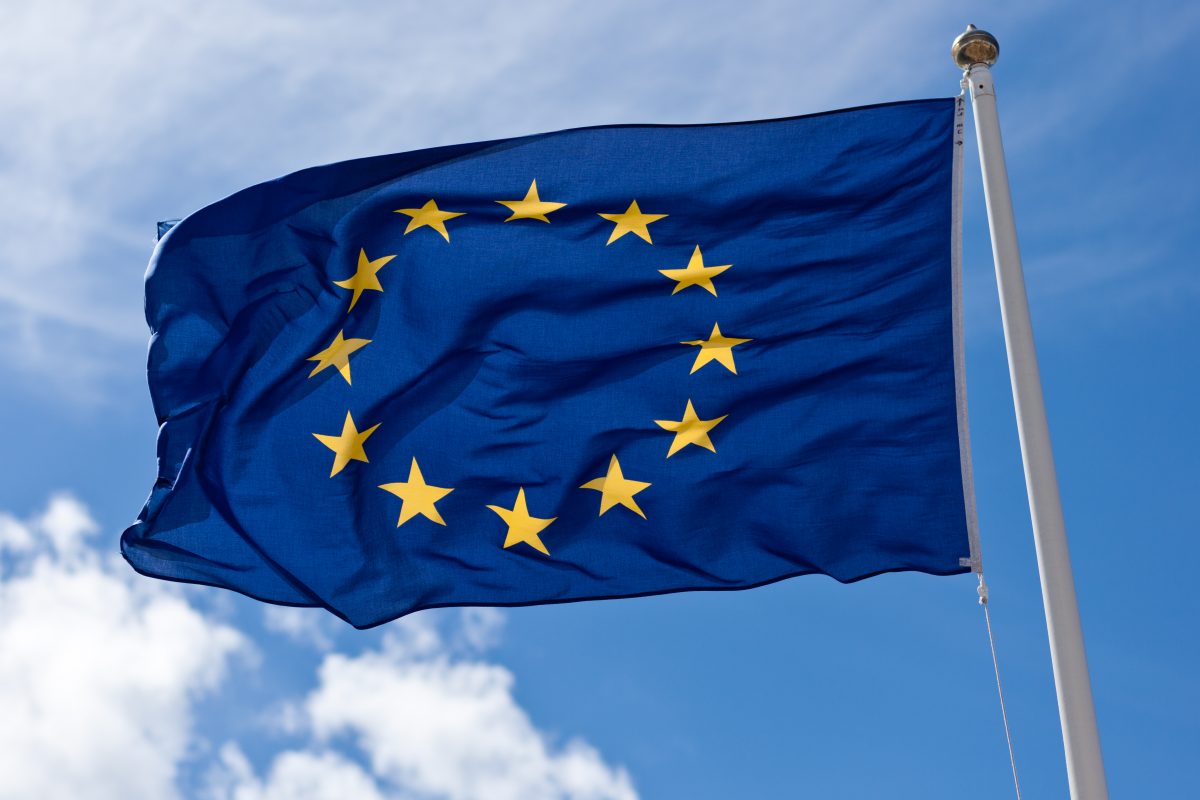A CHANGE of mind
Fashion and Policy discussions at the ISEE Degrowth Conference: As both CHANGE and Wasted Textiles projects are nearing their ends, and both projects focus on degrowing the textile sector (the latter more specifically the plastic part of textiles), what could be more fitting than organized two special sessions at the ISEE Degrowth conference in Oslo?
The four-day conference with 1200 delegates from 60 countries opened with a key note speech from a barefoot Director of the Colombian Environmental Authority, Irene Valez-Torres, telling European policy-makers to start using their own resources and stop extracting from the Global South in the name of Green Growth. The slight woman in a billowing yellow dress spoke forcefully about decolonizing the Eurocentric mind-set, the new Colombian government’s willingness to grow what sustains us – local communities – not corporations and businesses, and the roof virtually lifted with applause when she finished.
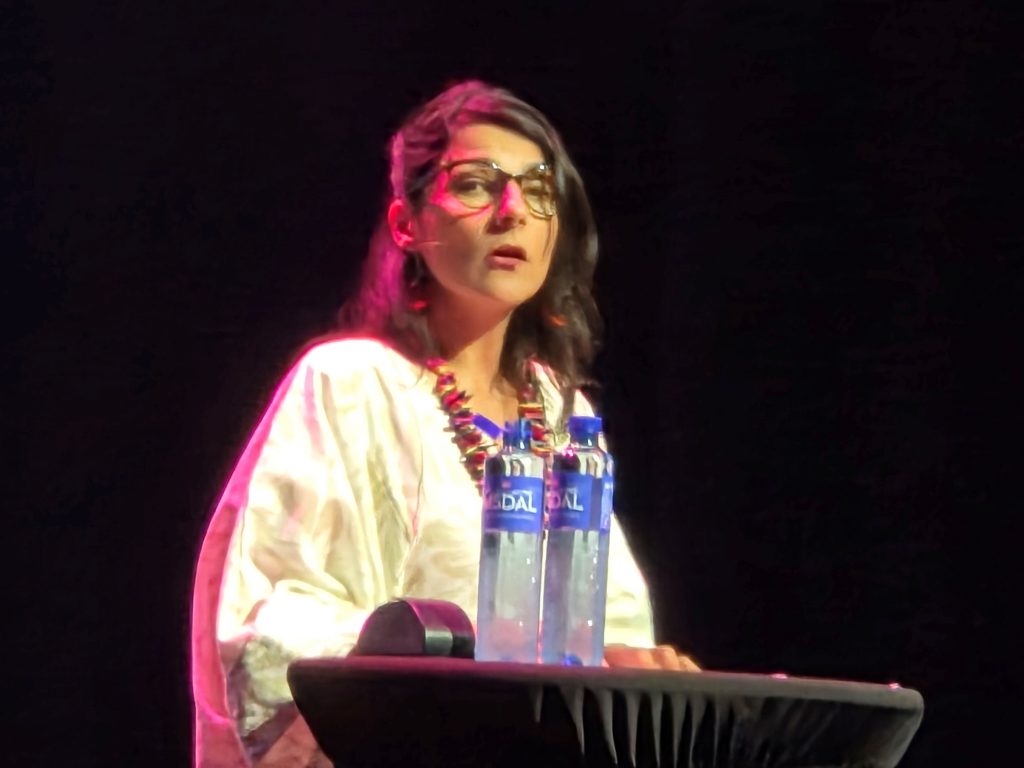
A performance by Sami activist and artist Ella Marie Hætta also mesmerized the room and also literally lifted the roof.
How refreshing and timely, as the latter of our two sessions was How to speak so policymakers listen? Sharing experiences of trying and failing to transform EU legislation in setting an upper production/import limit in rich countries – drawing on the case of clothing and textiles. Kate Fletcher chaired the session, which started with a presentation by Ingun Grimstad Klepp and yours truly’s efforts at the EU level, alongside our good helpers from both CHANGE and Wasted Textiles: Kate, Irene Maldini, Lisbeth Løvbak Berg, Kirsi Laitala, Kerli Kant Hvass and Jens Måge. We are also thankful for insights from a Union of Concerned Researchers in Fashion Action Season event.
Our frustration: The head-banging of not getting the message across that the Textile Strategy and the policies coming out of this are – in sum – an on-coming train wreck. It seems policy is based on the assumption that more durable, more repairable and more recyclable apparel is going to reduce volumes produced; when it is more probable that it’s the opposite approach that is the way forward: reduction in volumes. We don’t need more of anything, we need less!
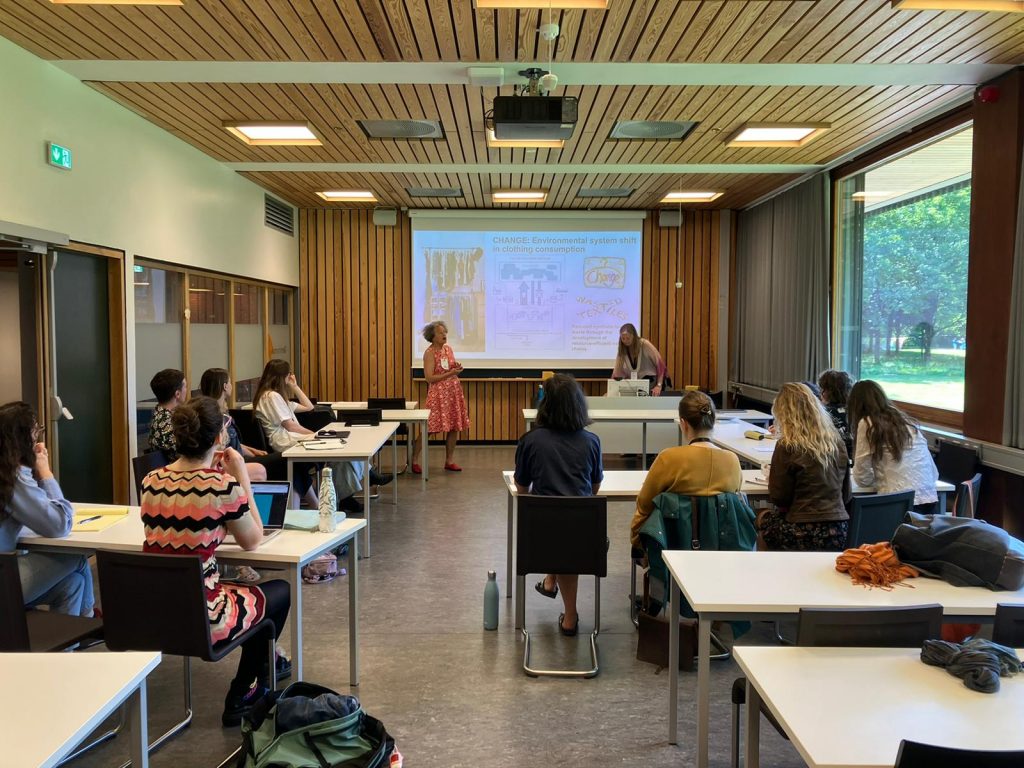
This can be achieved through hiking the prices substantially, which surfaced in the ensuing discussion. Katia Dayan Vladimirova talked about that local city level may be an easier place to start (her experience from Geneva) but also perseverance (just getting volume reduction into policy has been a major break-through as green growth is the mantra). Irene shared how the Netherlands are setting import limits, citing her research (!). France’s new anti-fast fashion policy tools were also mentioned, though the question remains if they are effective, and of course tariffs (Trump’s intervention in the global economy – a blessing in disguise?).
Irene: “It was impressive to see many young people trying to affect policy in this direction from several countries, also outside the EU. Our shared experience is that unfortunately, formal democratic participation channels do not work. Informal channels and key contacts with political actors including consultants are more efficient channels to affect policy change. Sadly, these channels are not equally available to all citizens or scientists, questioning the democratic nature of policy influence.”
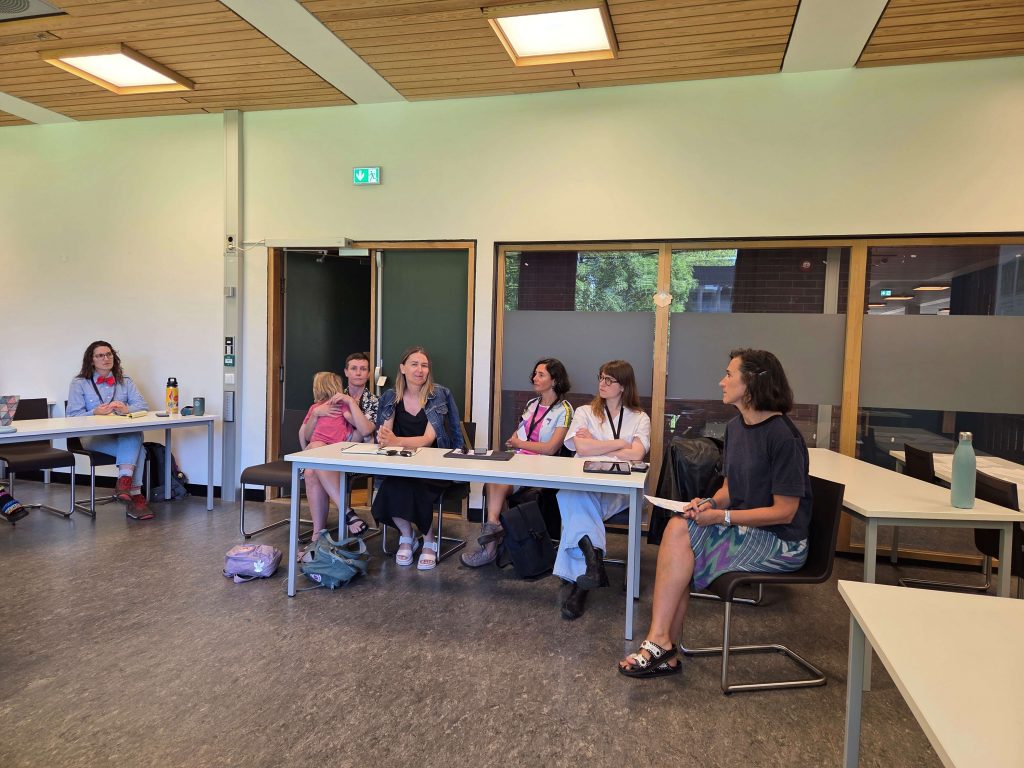
Kate: “Individuals get this, institutions less so.” Once policy is set in ‘stone’, it is – literarily – set in stone.
Surprisingly, an EU politician from Hungary, attended the session, and bluntly said that “politicians want to be re-elected – use our self-interest in this regard, showing us that there is a large number of people’s votes to be won if we support this issue”. She specifically mentioned petitions. Coming into the discussion early, before they are “set in stone”, is another takeaway. Which is, of course tricky.
There were other insights: How language is key, how degrowth or post-growth are words that stop the conversations in their tracks, while a well-being economy resonances. How change is deemed scary, as opposed to status quo, the belief policy makers place in “rocket science” and innovation vs good old fashioned common sense and use of those old boring resources. Surprisingly, SoMe entered late into the room.
And then the tricky one: How much to dumb down without losing integrity. Sticking to one message, and repeating it over and over, beyond one’s own boredom with being stuck in a groove: vital. Also to have ready alternative solutions, not just criticizing what is on the table. So, when a crisis or massive realization hits home, one has a working alternative ready in place.
Making it personal, is also an effective approach. And the obvious: How much money can be saved and how many jobs safeguarded.
It still remains a paradox, as Ingun reiterated: “We’re asked for evidence, but when we deliver it is ignored or misconstrued.”
23 attended, in conflict with similar themed sessions, and hold your hats: 4 men.
The other session, Degrowth dialogues in fashion: cultivating the seeds of change, was initially planned for four presentations, but 30 submissions were received and thus Chairs Kate and Irene decided to extend it to a double session. As there were all in all 290 sessions and 900 presentations: kudos!
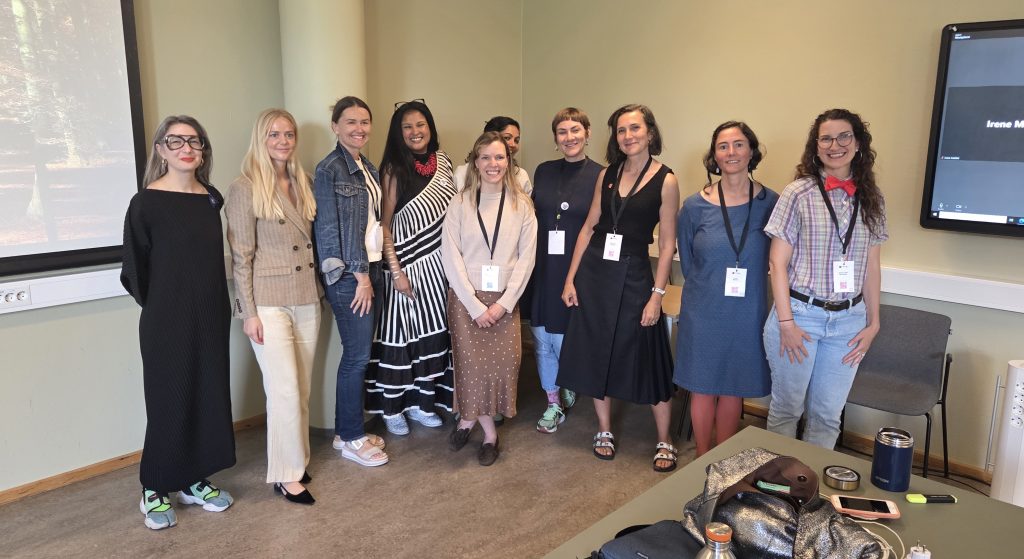
The background for the session being that the fashion sector is perhaps the poster child of consumerist materialism and economic growth logic. And yet despite the seeming inevitability of growth and its myriad social and environmental costs; seeds of degrowth thinking and practice in fashion are increasingly present. Topics ranged from understandings of production and consumption dynamics in degrowth vs. the more mainstream sustainable development, to indigenous perspectives, and accounts of the daily life of garment workers. Irene: “We are grateful to all participants for their work in this space, and their efforts to share it with us in Oslo.”
There were powerful and passionate interventions, such as Unweaving Coloniality: Degrowth and Reparations as Tools for Dismantling Colonial Structures in Fashion presented by Lavinia Muth, Centering the ‘Garment Workers’ in the Degrowth Fashion Scholarship presented by Aksha Fernandez, Satiable versus insatiable: The ambiguity of anthropological assumptions in a movement against fashion overconsumption presented by Marie-Christine Roy, and Thought experiment in facilitating post growth conversations in fashion presented by Katia Dayan Vladimirova, who had co-authored with David Hachfeld. Looking forward to hearing more on their Fashion Fund idea.
Fashion as Kaitiaki: Indigeneity, Reciprocity, and Post-Growth Pathways – presented by Karishma Kelsey – and co-authored with Tukahia Ngataki – offered a thought-provoking Indigenous knowledge framework perspective from Mātauranga Māori, African Ubuntu, and Indian dharmic philosophies with pathways to degrowth rooted in reciprocity, sufficiency, and ecological balance. How teacher and student fluidity is key was an interesting take-away.
Ingun: “All things we do, we need to ask the question ‘will it decrease production or just mask the underlying problem?’
One other session also focused onIndigenous and local knowledge, the theme being protecting and restoring values of nature. However here only Ove Daniel Jakobsen from Nord University showed up.His talk, Reconnecting with the Earth: Integrating Indigenous Science and Deep Ecological Economics for a Sustainable Future sparkedan engaged discussion, and session participants agreed to reconvene in September to continue the discussion!
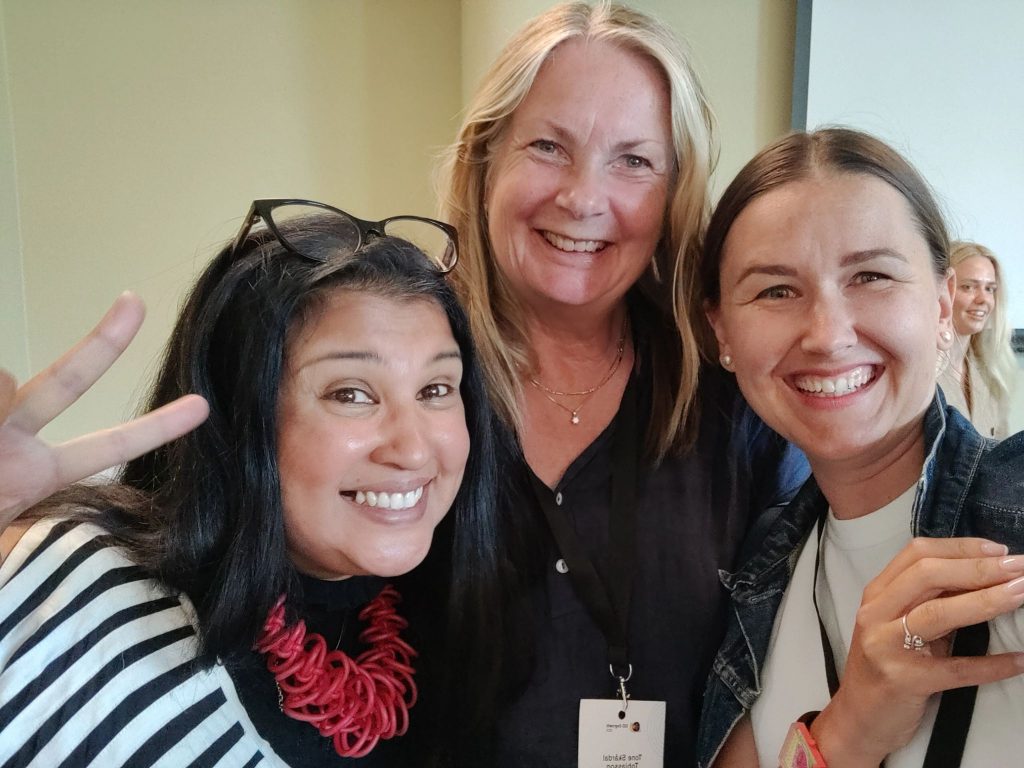
From the plenaries, Inge Røpke, Aalborg University, stood out, in a discussion that resonated with our policy session: What standard of living is compatible with just and safe planetary boundaries? How do limits intersect with justice? Is policy’s incremental process, civil disobedience or off-grid living the way forward?
Actually, aside from Ove’s presentation, it was the women who stood out as the most powerful voices. Lebohang Liepollo Pheko (Trade Collective; Wellbeing Economy Alliance; Global Tapestry of Alternatives) was a firework voice on work time reduction and care. Kate Raworth (Senior Teaching Fellow, Oxford University; Professor of Practice, Amsterdam University of Applied Sciences) summed up in the last plenary the big elephant in the room: grassroots and top-down action. For systemic change to happen, it can be simply that communities say ‘no’ to the growth and go off-grid. But this will need to be bottom up, as the EU economy is mired in growth, competitiveness and colonized logic.
The Columbian, barefooted Minister’s opening key note speech made it abundantly clear: A CHANGE of mind is on its way. During the opening session we also heard: “We eat and WEAR the Earth”, wow for wear being included! And Ove’s Arne Næss citation ‘have revolutionary goals with evolutionary steps’ may just be a guidance.
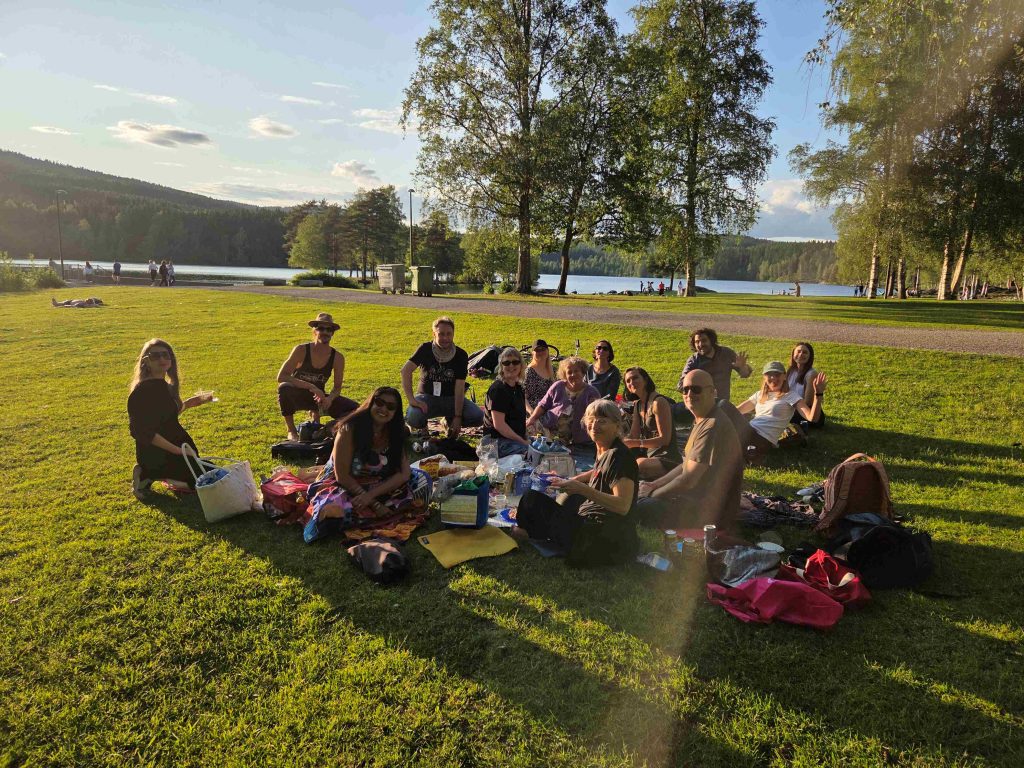
CHANGE is funded by Ground-breaking research (FRIPRO) from the Research Council of Norway, from July 2021-2025.
